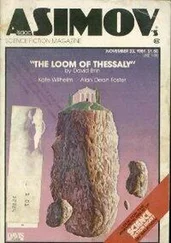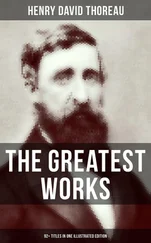On the outskirts of Santa Tecla, in an area of dense trees and crowded village outcroppings, the bus comes to a halt. The rain has caused a landslide and large clumps of brown earth and stone are blocking access to the highway. There’s utter chaos as two-way traffic tries to navigate through the single passable lane between the mounds of mud on the road. What’s worse, there are no policemen to help sort out the mess. For the next half hour the bus inches forward, maybe a block at most.
Suddenly the ticket taker jumps off the bus wielding a pistol and gesturing wildly. He reaches the blockage and points his gun at the driver of a station wagon moving in the opposite direction, stopping him. This allows the cars in front of the bus to drive through the obstruction. Once the bus gets by, the ticket taker swings back on, cheered by the passengers.
The bus begins to wind slowly up the mountains. Guillermo is surprised by the route and asks the driver what’s taking so long. The driver tells him that if he wanted the fast route, he should’ve taken the express bus to Comalapa International Airport, not the mountain route via Santa Tecla. Instead of smelling the sea air along the coastal route, Guillermo is treated to the odor of dank, fetid vegetation and innumerable stops.
The bus strains up the incline and races down the slopes. The engine is grinding, the sides of the bus shaking, and the passengers are talking loudly as they take hairpin turns at high, unsafe speeds. Several times Guillermo sees the bus heaving halfway over the ravine before managing to right itself back onto the road. But maybe in this way, they will make it through the mountains and arrive in La Libertad on time.
Once out of the mountains, the driver floors the pedal. Gas stations, small villages, and roadside businesses swirl by. Guillermo is nauseous by the time the bus slows down on the crowded outskirts of La Libertad: tire shops, hardware stores, dirt-floor restaurants. The sun has come out and steam floats like low-hanging clouds over the quickly drying asphalt.
The bus stops in the main square facing the central church a bit before twelve. Guillermo doesn’t know what he imagined, but this church is no cathedral: it looks more like a large airplane hangar, with corrugated tin walls surrounded by a barbed-wire fence built, he imagines, to keep possible suicide bombers away, a relic of the civil war.
He doesn’t understand why the fence hasn’t been brought down. Does it still face a daily onslaughts of terrorists attempting to get in? To do what? To pray?
Guillermo is struck by the sinking feeling he has made a huge mistake by coming: better to dream desperately of her survival than face disappointment at a place as disheartening as this. It’s absurd to be waiting for his deceased lover in front of a veritable airplane hangar in La Libertad, El Salvador.
He waits and waits, seeing two other buses arrive and an equal number leave, and soon it is twelve thirty. The sun is beating down now that the rain has temporarily subsided; there’s no relief. Guillermo realizes Maryam will not be meeting him, that she perished in the car with her father, that his hope she survived the explosion has been a childish fantasy.
chapter thirty-two. paying the piper
Maryam’s bus from San Lorenzo stops at the town of La Amatillo around eight a.m. for the passengers to go through customs and immigration control. But even before the bus reaches the border crossing, it’s surrounded by nearly one hundred teachers and their families holding signs and placards protesting salary cuts and the poor working conditions in western Honduras. Maryam is sympathetic to the strikers, but furious at the delay: she had left her home at six in the morning, planning to arrive in La Libertad by eleven. She could kick herself for not having left the day before.
The driver says they will get through the protesters in a half hour. Maryam is unconvinced. She looks out the window and sees the build-up of thick clouds — the rain could be a blessing in disguise since it might force the teachers to scatter. Nervously, she begins playing with her ring. It has bands of silver filigree and there’s a deep amber stone, almost ruby in color, in the center. She bought the ring in a Tegucigalpa store that sold jewelry from Mexico. The shopgirl called the stone a lagrima de la selva. A jungle tear.
Maryam bought the ring to symbolize her engagement to Guillermo. She has no idea if they will ever see each other again, but she wants to wear something on her right hand that will remind her of him every day.
In San Lorenzo, she wears her wedding band on her left hand so that the men in town will not bother her. She passes herself off as a grieving widow whose husband died in Guatemala. Here on the bus she puts the ring in her purse.
With the bus at a standstill, the driver allows two peddlers on. They walk down the aisle selling food and beer to the half-asleep passengers.
Maryam is starved. She buys two bean pupusas and gobbles them down while looking out the window. The strikers are jovial but show no signs of letting the bus and the stream of cars behind it go by. She’s not sure what’s going to happen next.
Loud claps of thunder shake the bus. A minute later, bolts of lightning illuminate the marchers and the rain starts bucketing down. Within a minute the strikers have dispersed and the bus driver inches down another five hundred yards to the border crossing. Years ago, crossing frontiers could take days, but since Central Americans now share the same blue passport, crossing is easy. The passengers don’t even need to disembark as border agents come aboard the buses to stamp their passports.
Soon they’re on their way to San Miguel where Maryam will transfer to the La Libertad bus. She drifts in and out of sleep, once again reliving the moments after the explosion.
She has no idea why the bullets suddenly stopped. She sees herself crouching in the construction site, waiting for the onslaught of more bullets. Instead, she heard a car drive away. Who was it and who did they think they were chasing? Her? Some unknown witness? Did they think whoever it was got the message and knew better than to try to come forward?
The bus hits a bump and Maryam is startled awake. A part of her is still expecting that bullet. Her carriage is no longer carefree — there’s something skittish about it.
She presses her body against the window. She reminds herself that she escaped. As she dozes again, she sees herself leaning against the bus window as though crouching in the construction site. The same dream of that day takes over once more.
* * *
The bullets stop and she knows she must be decisive. She’s alone, but she tells herself the worst is over. She decides it’s best to wait until dusk. She tries to quiet her mind. Breathe calmly.
At six p.m. she gets up and walks the back roads until she reaches Calzada Roosevelt where she takes a public bus to the Marriott Hotel in Zone 9. She spends the night there, not too far from Guillermo’s rendezvous apartment in the Plazuela España. She knows there are first-class buses that leave from the Radisson not too far from the Marriott. She takes the first available bus in the morning. It’s going to Tegucigalpa. She knows she can’t stay in the Honduran capital, but it’s the first step toward safety. She’s sure people are trying to find her.
She decides to settle in a small town called San Lorenzo, on the Pacific coast, about two hours from Tegucigalpa. It’s an inferno and has none of the conveniences she has grown accustomed to. She lives simply, renting a nondescript apartment and waitressing in a small but busy fish restaurant in the Las Cabañas area, overlooking the harbor. A few months later, she starts to teach the cook how to make some Middle Eastern dishes — tabbouleh, kibbes, falafel sandwiches, saffron rice — as a way to keep part of who she is in a place where she has absolutely nothing. These recipes are her connection to her father and to Guillermo. She knows it isn’t much, but it’s something.
Читать дальше












